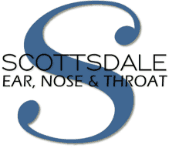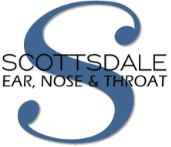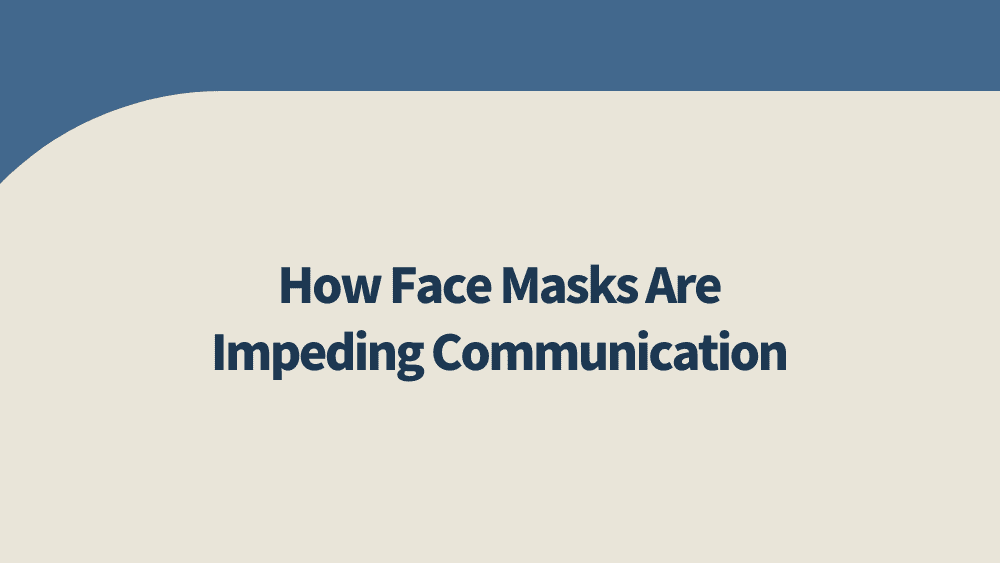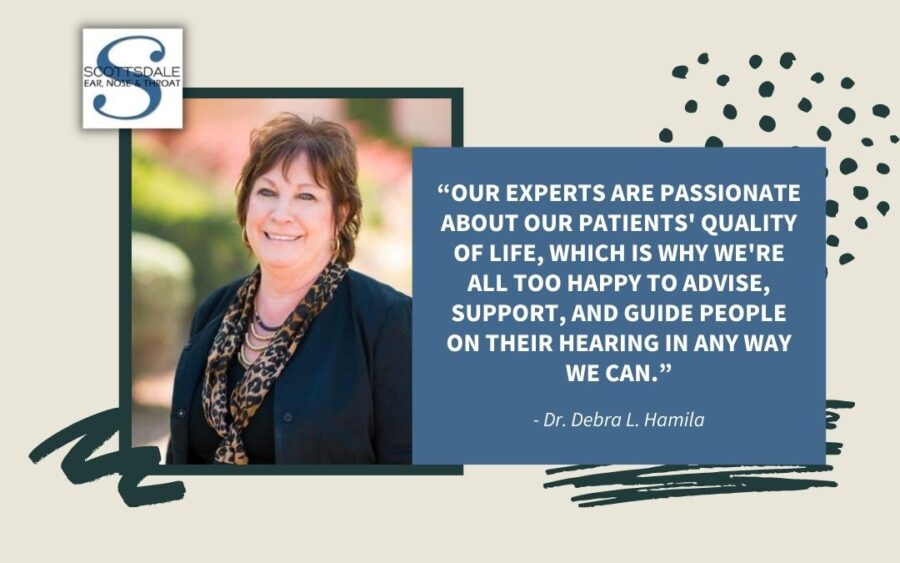Physical and mental health issues, including depression and anxiety, reduced social interaction or isolation, and an increased risk of dementia, are significant symptoms of an undiagnosed hearing loss. Decreased independence, strained relationships, and an overall reduction in quality of life are among the most lasting repercussions.
More than 1.33 billion people worldwide are affected by some degree of hearing loss. Due to the use of face masks, those with hearing loss are struggling even more. As advocates for better hearing in Scottsdale, and the surrounding community, we would like to raise awareness of the challenges that face masks pose for those with hearing loss and provide some tips to help make things easier.
The Challenge
The use of face masks limits two fundamental elements of communication; clarity of speech and facial cues.
Clarity of Speech
Sound waves travel along the hearing pathway to the brain where it is processed, interpreted, and understood. This process is essential for hearing.
Whenever someone turns away, places their hand over their mouth, or speaks from behind a face mask, it impedes this free flow of sound. Consequently, even individuals with excellent hearing become subject to a hearing experience similar to wearing a pair of earmuffs.
Muted speech from behind a face mask exacerbates the already reduced capacity of those with a hearing loss, making it difficult to distinguish between similar-sounding words and even entire phrases during a conversation.
Face masks lower the volume of sounds by approximately 15 decibels – that is the same volume as a whisper. If a person is already speaking softly, you can see how it is then impossible to hear for someone who already struggles to.
Absence of Non-Verbal Cues
As we communicate our thoughts and feelings we use various facial cues and mico-expressions, which are an integral part of imparting meaning and context to our words.
These non-verbal cues are something that is learned from infancy and is an essential step to understanding emotion. How many of us remember “the look” our parents gave us when we’re in trouble? This “look” is non-verbal but immediately understood. A face mask obscures this communication or leaves it almost entirely redundant.
Those with a moderate or severe hearing impairment also rely on lip movement to understand the speaker. A big part of ASL relies on lip movement to create meaning/context. It is also tough to sign without touching the face.
Covering up the mouth eliminates these non-verbal cues and causes the listener to rely solely on raw sound for communication.
How You Can Help
- Reduce background noise: Find a quieter place to talk or reduce background noise, like television or music.
- Slow down and speak up: Most people speak very fast and tend to speak softly. Slowing down and speaking up, without shouting, helps make it easier to distinguish words and phrases from each other, improving the odds that your listener will understand.
- Wear a face mask with a transparent window.
- Use tools and apps: A variety of communication tools and smartphone apps have become available during this critical time. Some apps work as a microphone with amplification to help give those muffled sound waves a boost, while others translate speech into text so that someone who has difficulty hearing can read what the speaker is saying.
Scottsdale ENT Is Your Hearing Health Advocate
To avoid isolating those with a hearing loss further, being aware of the difficulties produced by wearing a face mask and making a conscious effort to improve communication, is vital.
The team and I at Scottsdale ENT are your better hearing health advocates. We are passionate about providing the necessary resources to improve communication for our patients during the pandemic.
We are proud to offer Telemedicine appointments to provide remote assistance, and in-person appointments according to revised safety protocols. Please call us at (480) 684-1080 or contact us online to take advantage of our hearing healthcare services.



